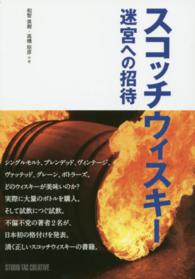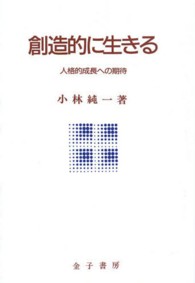基本説明
The book focuses on the Tohoku (Northeast) region, which many Japanese consider rural, agrarian, undeveloped economically, and the epitome of the traditional way of life. However, the contributors show how various regional phenomena combine the traditional, the modern, and the global.
Full Description
Explores how tradition and modernity coexist in regional Japan, arguing that the rural/urban dichotomy is outmoded for understanding this contemporary society.
This groundbreaking collection examines the regional dynamics of state societies, looking at how people use the concepts of urban and rural, traditional and modern, and industrial and agricultural to define their existence and the experience of living in contemporary Japanese society. The book focuses on the Tohoku (Northeast) region, which many Japanese consider rural, agrarian, undeveloped economically, and the epitome of the traditional way of life. While this stereotype overstates the case-the region is home to one of Japan's largest cities-most Japanese contrast Tohoku (everything traditional) with Tokyo (everything modern). However, the contributors show how various regional phenomena-internationalization, lacquerware production, farming, enka (modern Japanese ballads), women's roles, and professional dance -combine the traditional, the modern, and the global. Wearing Cultural Styles in Japan demonstrates that while people use the dichotomies of urban/rural and traditional/modern in order to define their experiences, these categories are no longer useful in analyzing contemporary Japan.
Contents
Illustrations
Acknowledgments
Part I. The Political Economy of Social Change in Tohoku Japan
1. The Practice of Tradition and Modernity in Contemporary Japan
John W. Traphagan and Christopher S. Thompson
2.The Social Impact of Rural-Urban Shift: Some Akita Examples
John A. Mock
3. Rice Revolutions and Farm Families in Tohoku: Why Is Farming Culturally Central and Economically Marginal?
William W. Kelly
Part II. Wearing Tradition and Wearing Modernity: Negotiating Paths of Social Change
4. Young Women Making Lives in Northeast Japan
Nancy R. Rosenberger
5. Negotiating Internationalization in Kitasawa
Tomoko Watanabe Traphagan
6. Preserving the Ochiai Deer Dance: Tradition and Continuity in a Tohoku Hamlet
Christopher S. Thompson
7. Heartbreak's Destination: Tohoku in the Poetic Discourse of Enka
Debra J. Occhi
8. Tradition and Modernity Merged in Tsugaru Nuri Lacquerware: Perspectives of Preservation and Promotion, Production and Consumption
Anthony S. Rausch
9. Epilogue: Tohoku: A Place
L. Keith Brown
Contributors
Index








